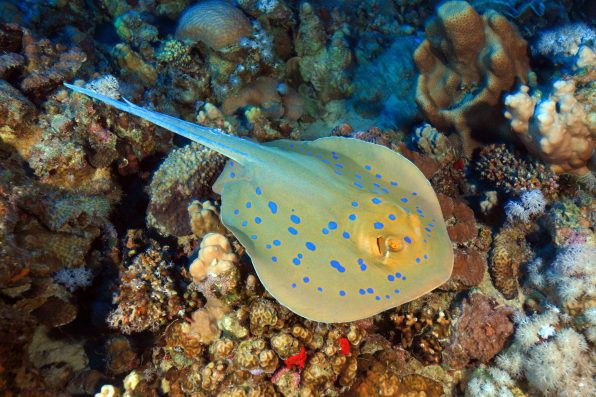For The First Time Ever, A Rare Baby Maugean Skate Has Hatched From An Egg Laid In Captivity, A Momentous Occasion For The Endangered Species

At the University of Tasmania’s Institute for Marine and Antarctic Studies, a baby Maugean skate has hatched from an egg laid in captivity for the first time ever. Scientists are expecting more to follow.
Last year, an adult female skate was captured in December as part of a conservation program for the endangered species. Soon after, she laid her first egg.
According to the Australian Marine Conservation Society, the Maugean skate is a ray that is only found in Tasmania, specifically in Macquarie Harbor.
It is heading for extinction, as the population has been experiencing major declines over the past few years. The Maugean skate may become the first marine fish extinction in modern times due to human activity.
“We’ve been trialing captive holding and rearing methods for two years with other skate species, so successfully producing our first hatchling from a captive-laid egg for this very unique skate is something to celebrate—and it’s a significant step toward conserving the species,” said Jayson Semmens, a researcher at the institute and leader of the Maugean skate captive breeding program.
It takes approximately seven months for the eggs to develop. The first hatchling was a healthy female who arrived on July 10.
Since the mother skate’s arrival, she has been laying two eggs at a time at an average of every four days. So far, she has produced over 100 eggs.
Researchers also brought 50 eggs laid in the wild into captivity in December. More than half of them produced healthy hatchlings. Captive egg-laying is just another technique that researchers are using to boost the Maugean skate population.
“Since December, the program has evolved quickly from simply knowing if we can safely hold skate and their eggs to confirming that not only can this be done, but captive females can rapidly contribute to the number of eggs in captivity—and the embryos can develop into viable hatchlings,” said researcher Dr. David Moreno.

aquapix – stock.adobe.com – illustrative purposes only, not the actual skate
The researchers have a captive male as well, but they placed him in a separate tank while the female was laying her eggs.
He is not the father of the newest hatchling. The female has been fertilizing her eggs with male fluid, which she had stored from her days of mating in Macquarie Harbor.
Recently, the scientists have put the two skates together in hopes they will mate. They have observed some courtship behavior, so things are looking promising.
Overall, the successful hatching of both the wild and captive-laid eggs was more than the researchers could’ve hoped for.
Moving forward, they plan to study the genetic identities of the captive skates and compare them to the genetic diversity in the wild population.
That way, they can better manage the captive population and determine which animals should stay in captivity and which ones can be released in the future.
Sign up for Chip Chick’s newsletter and get stories like this delivered to your inbox.
More About:Animals





